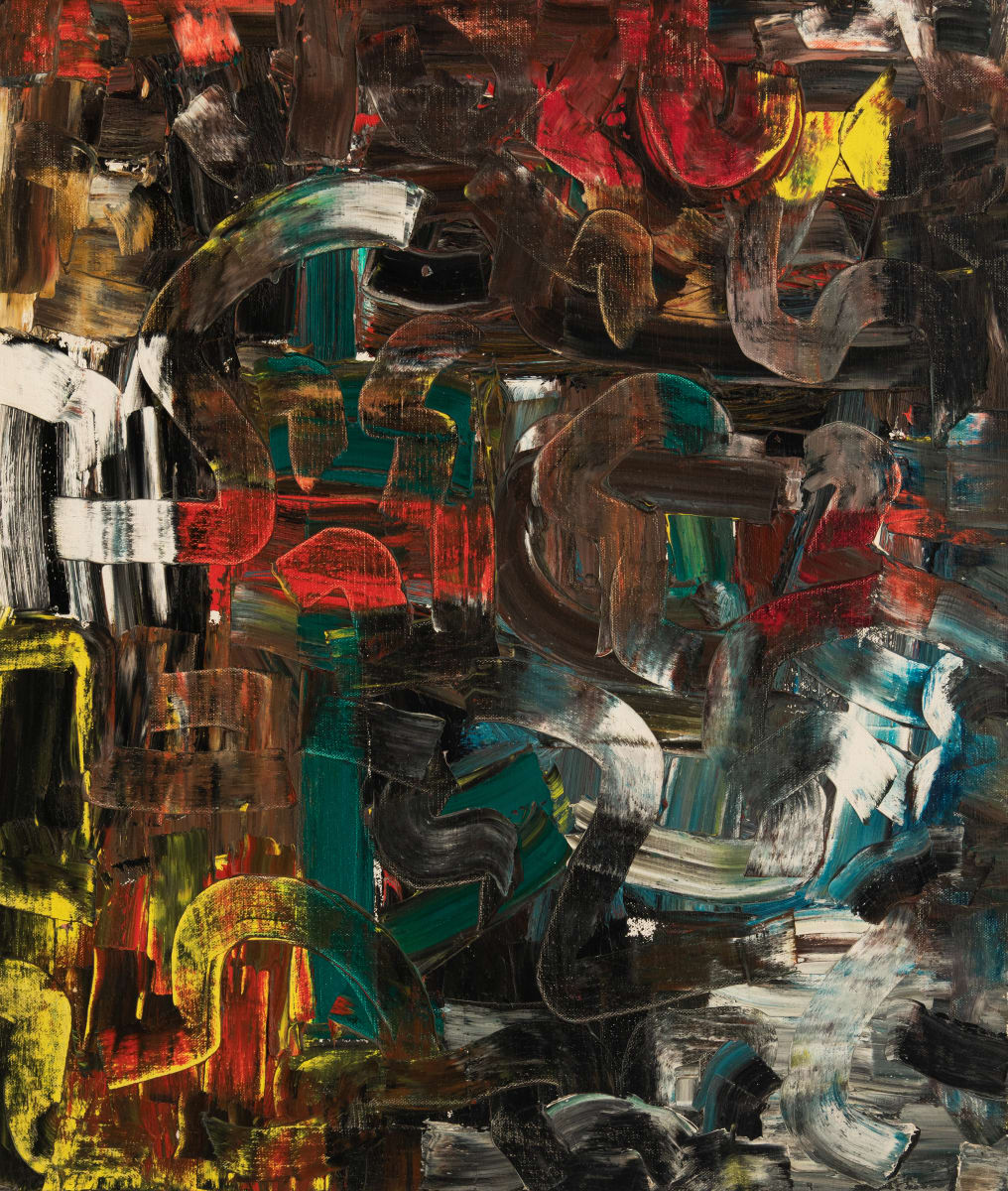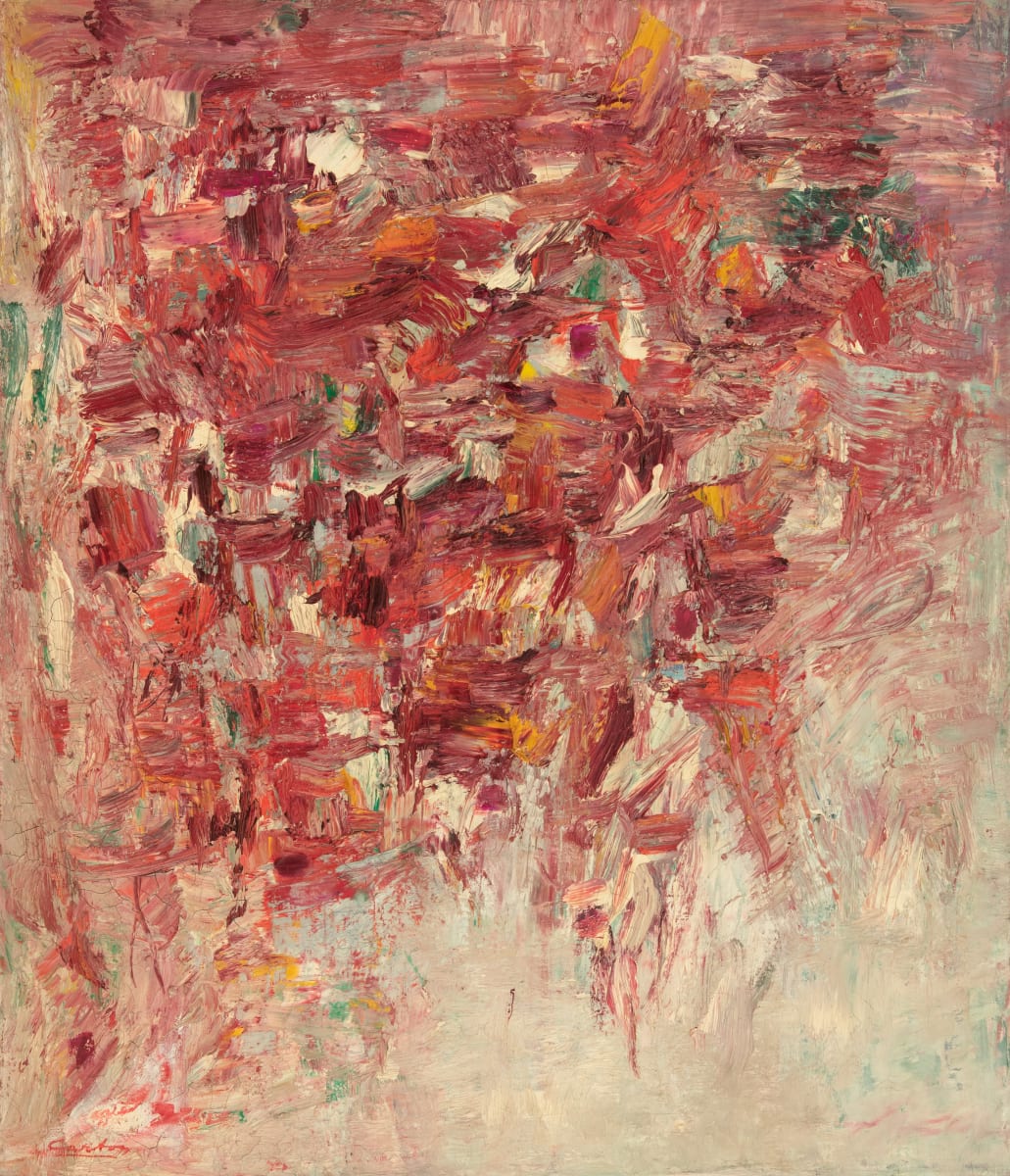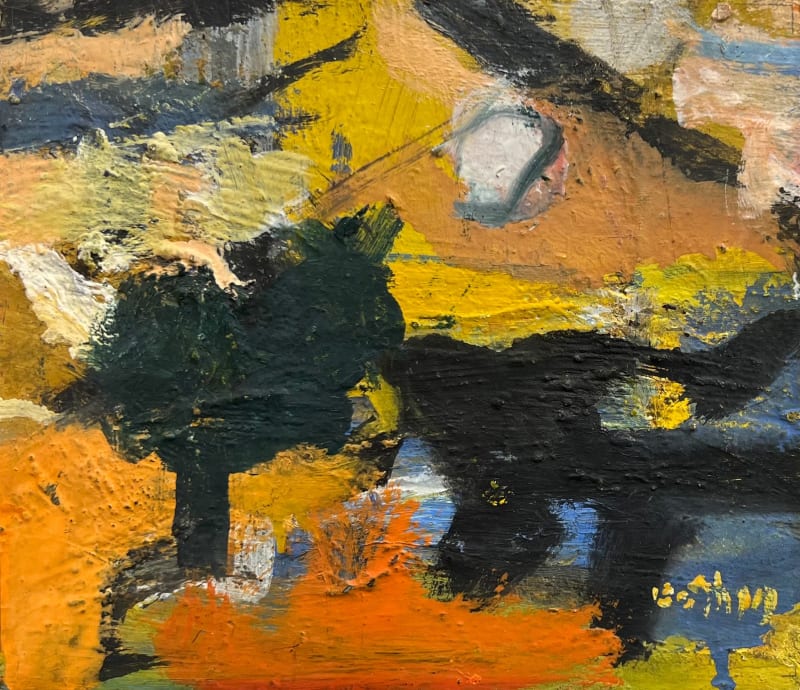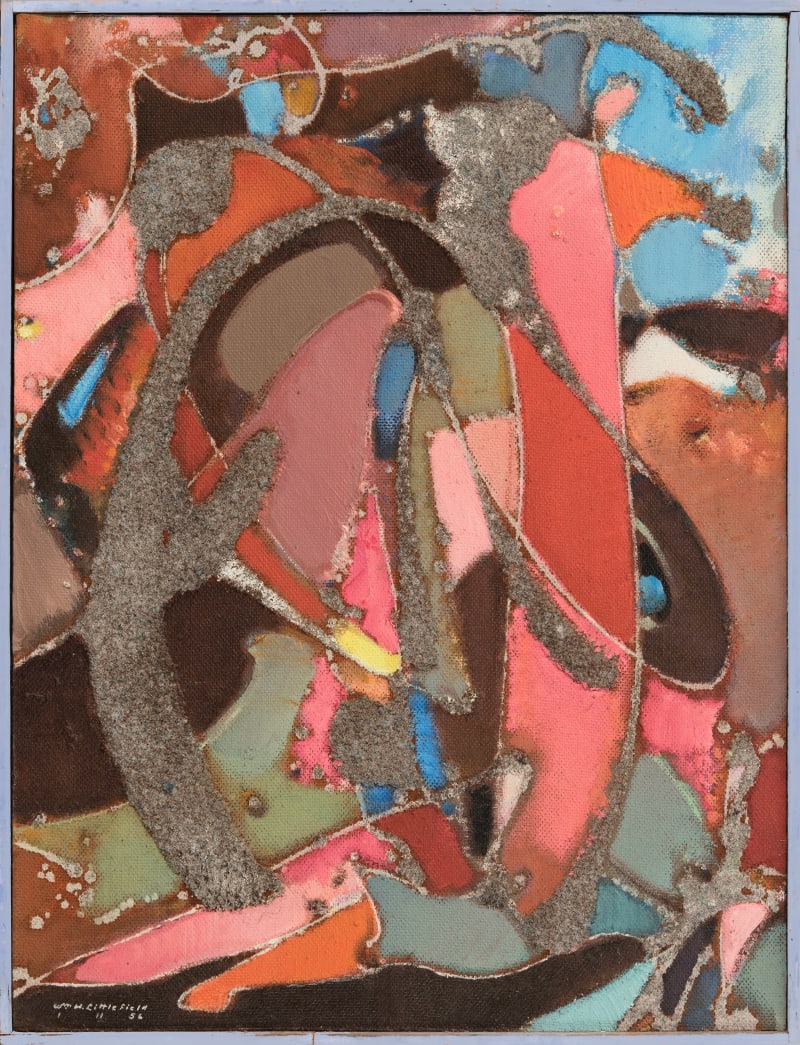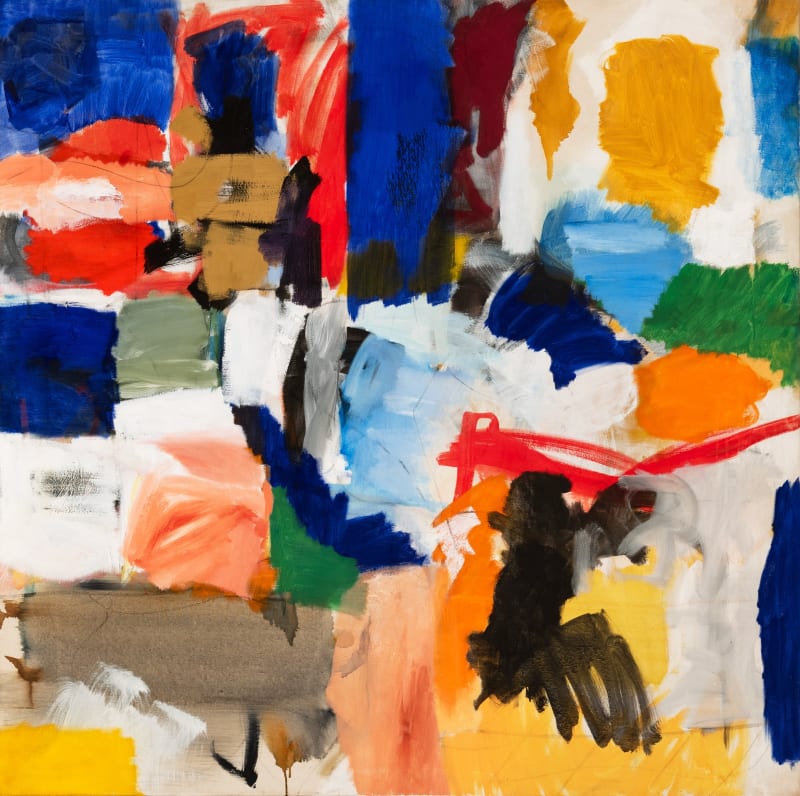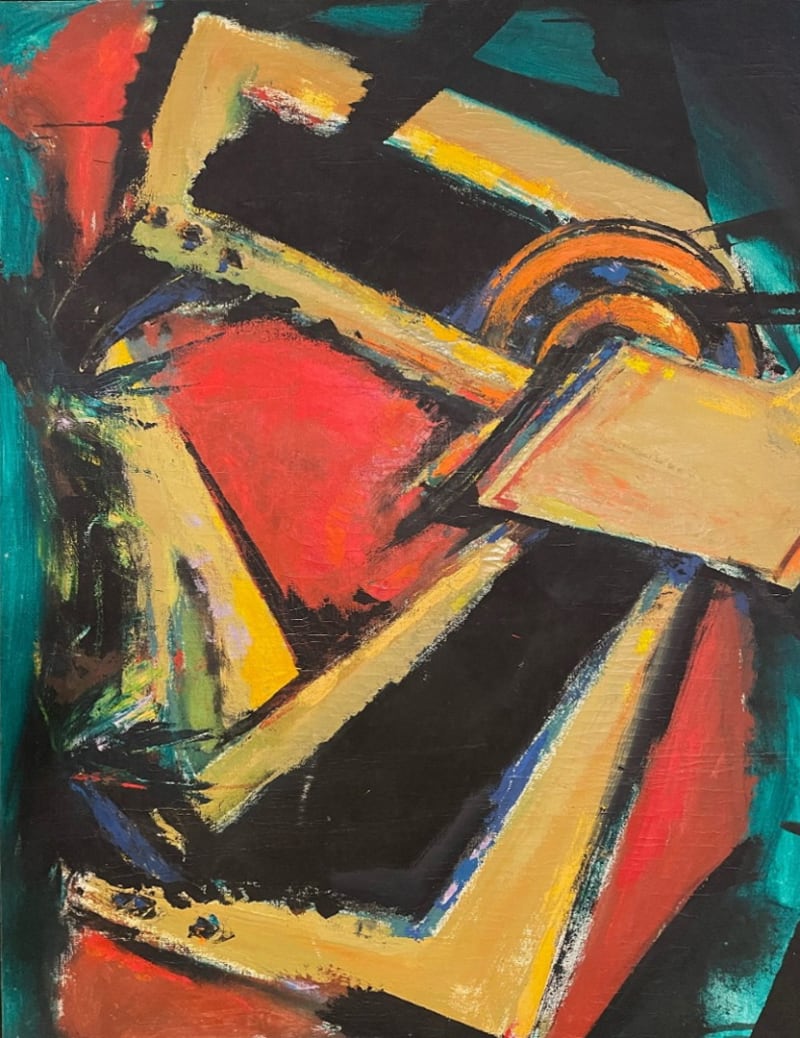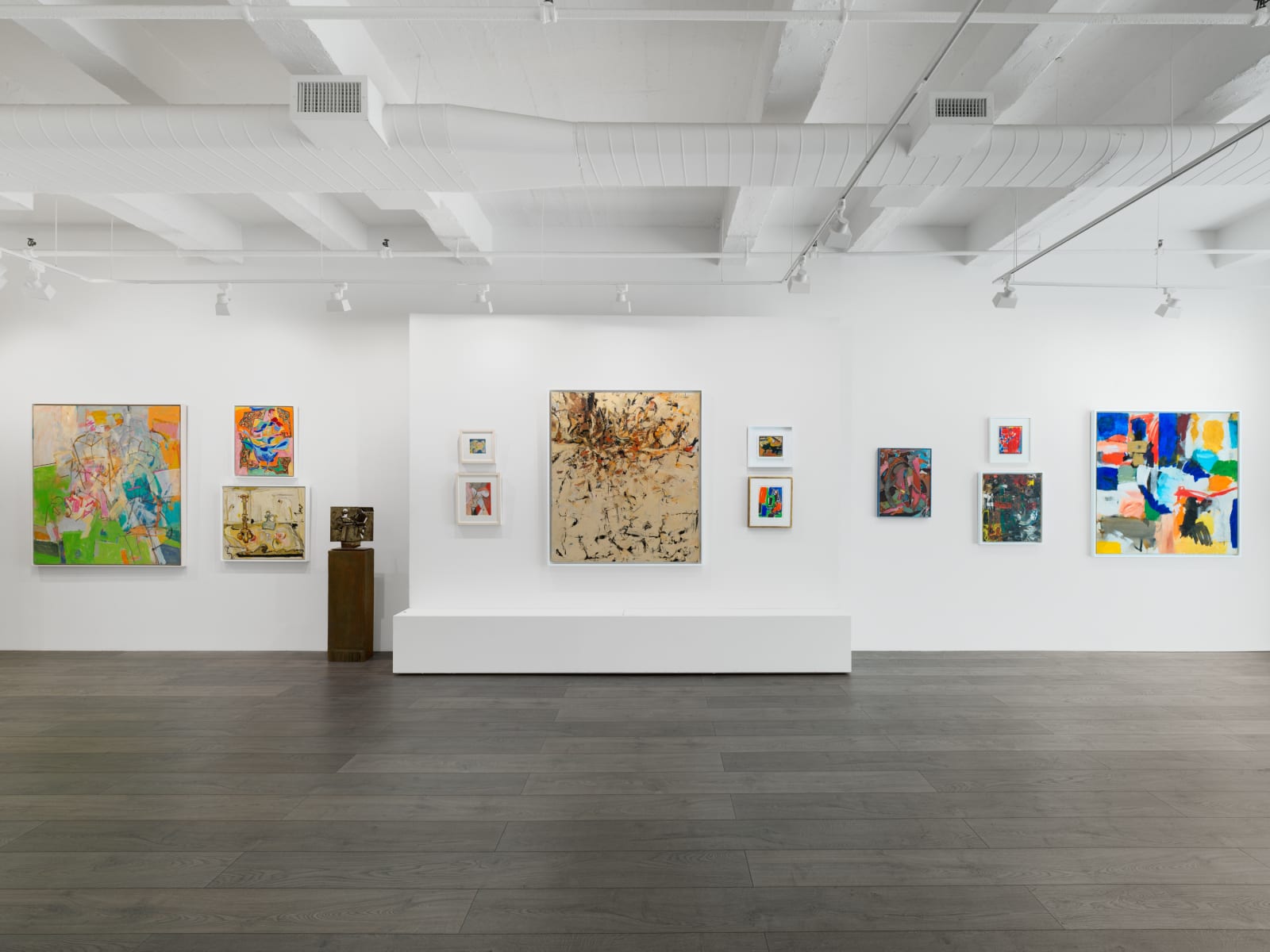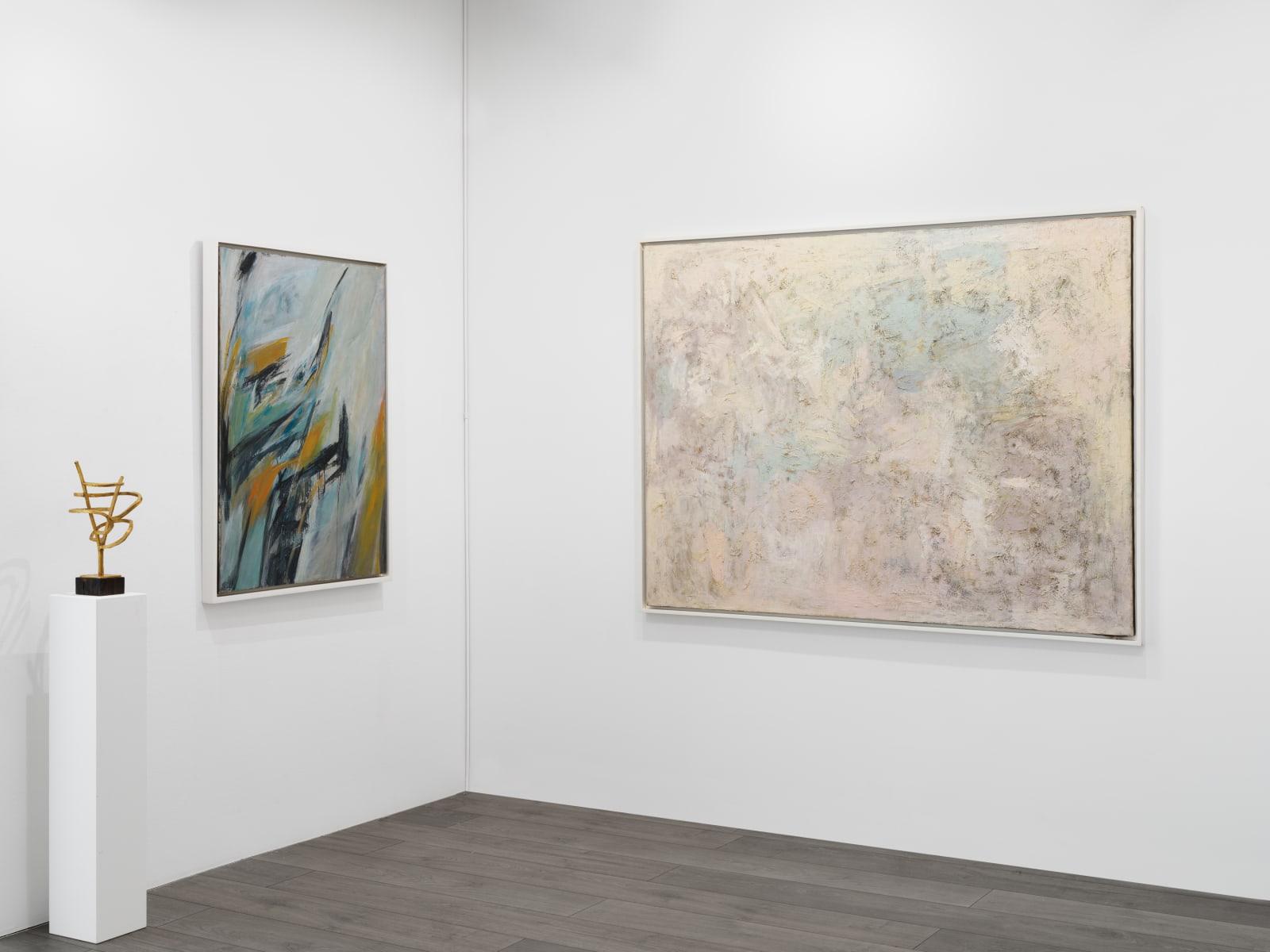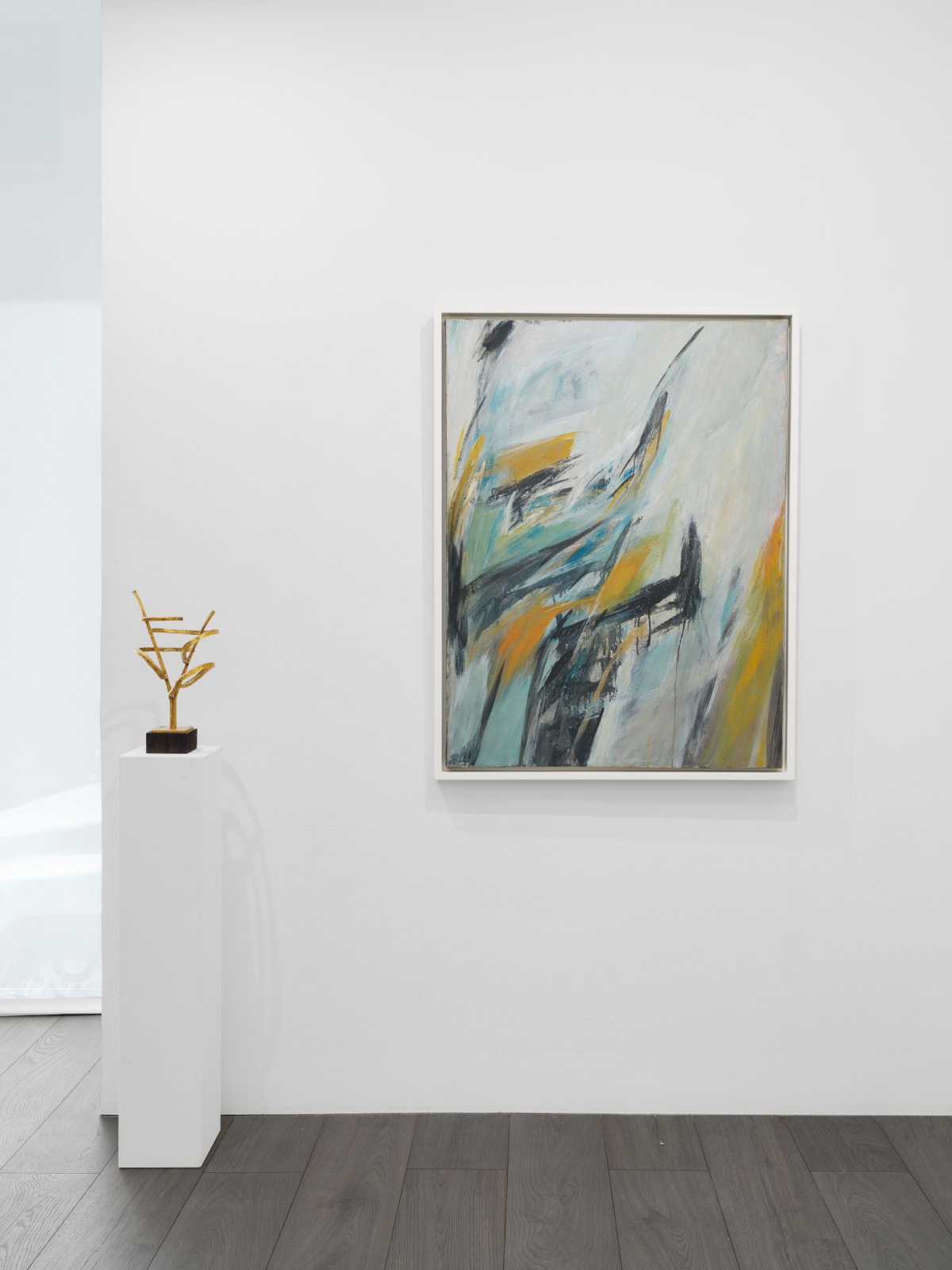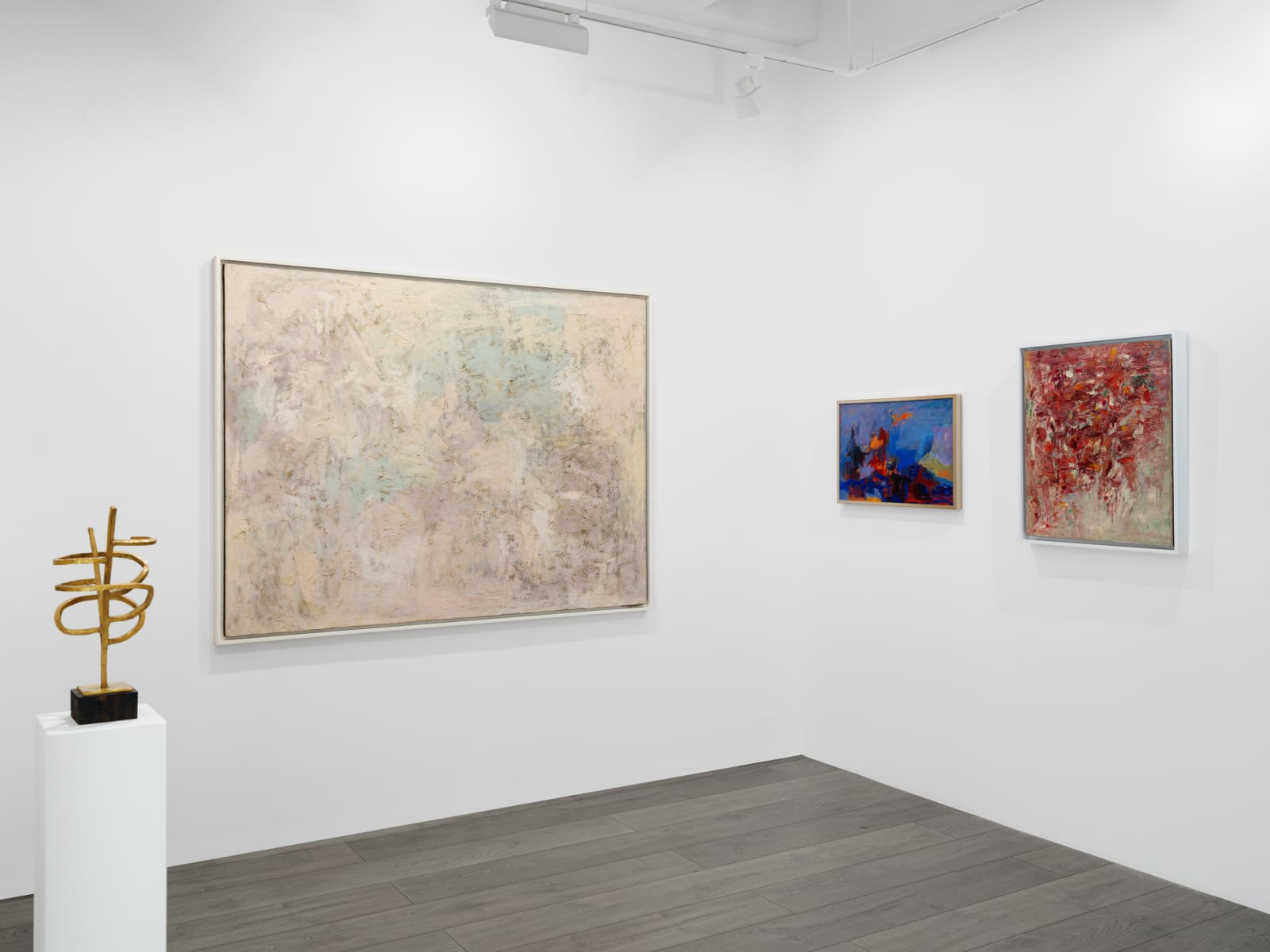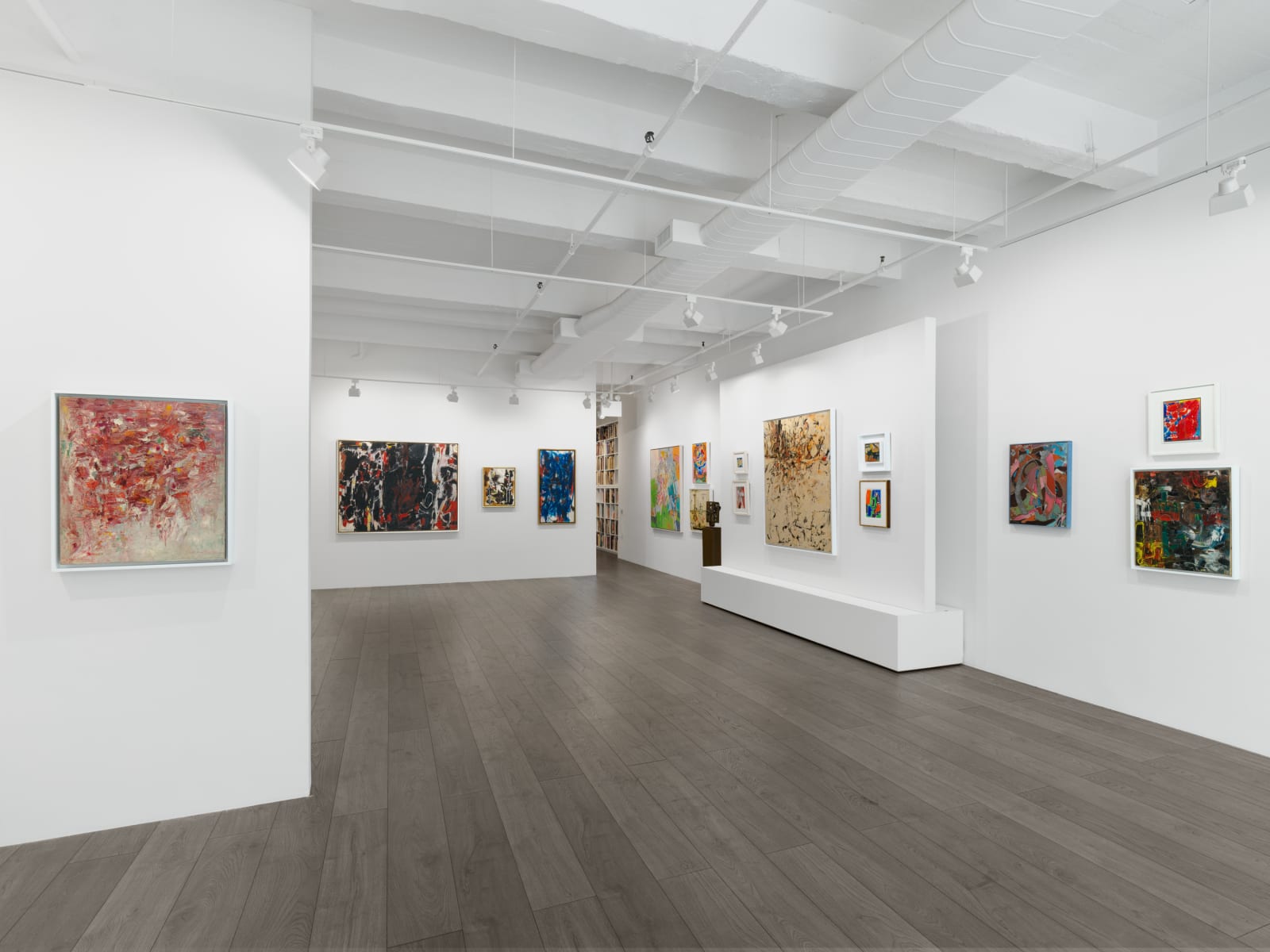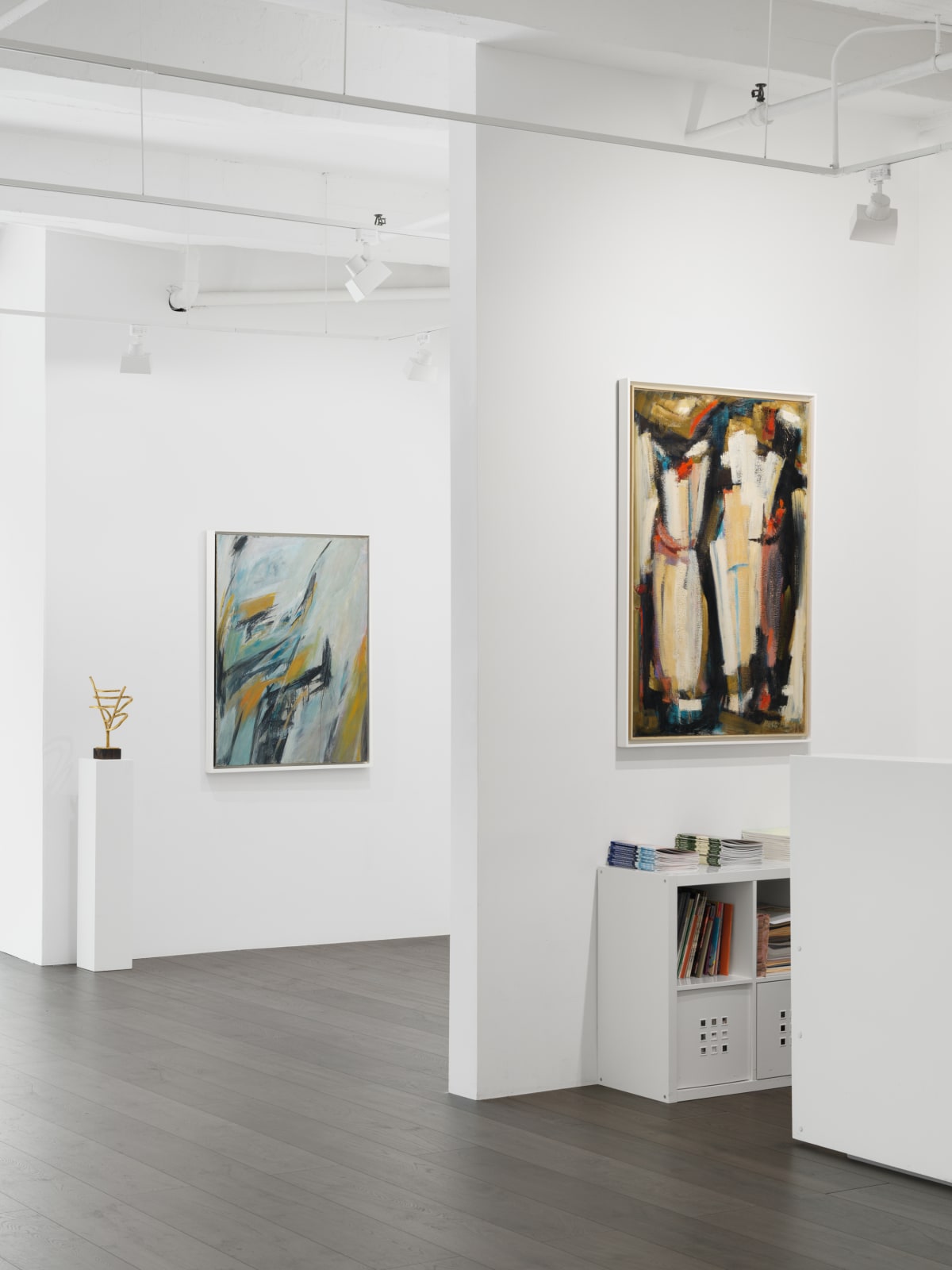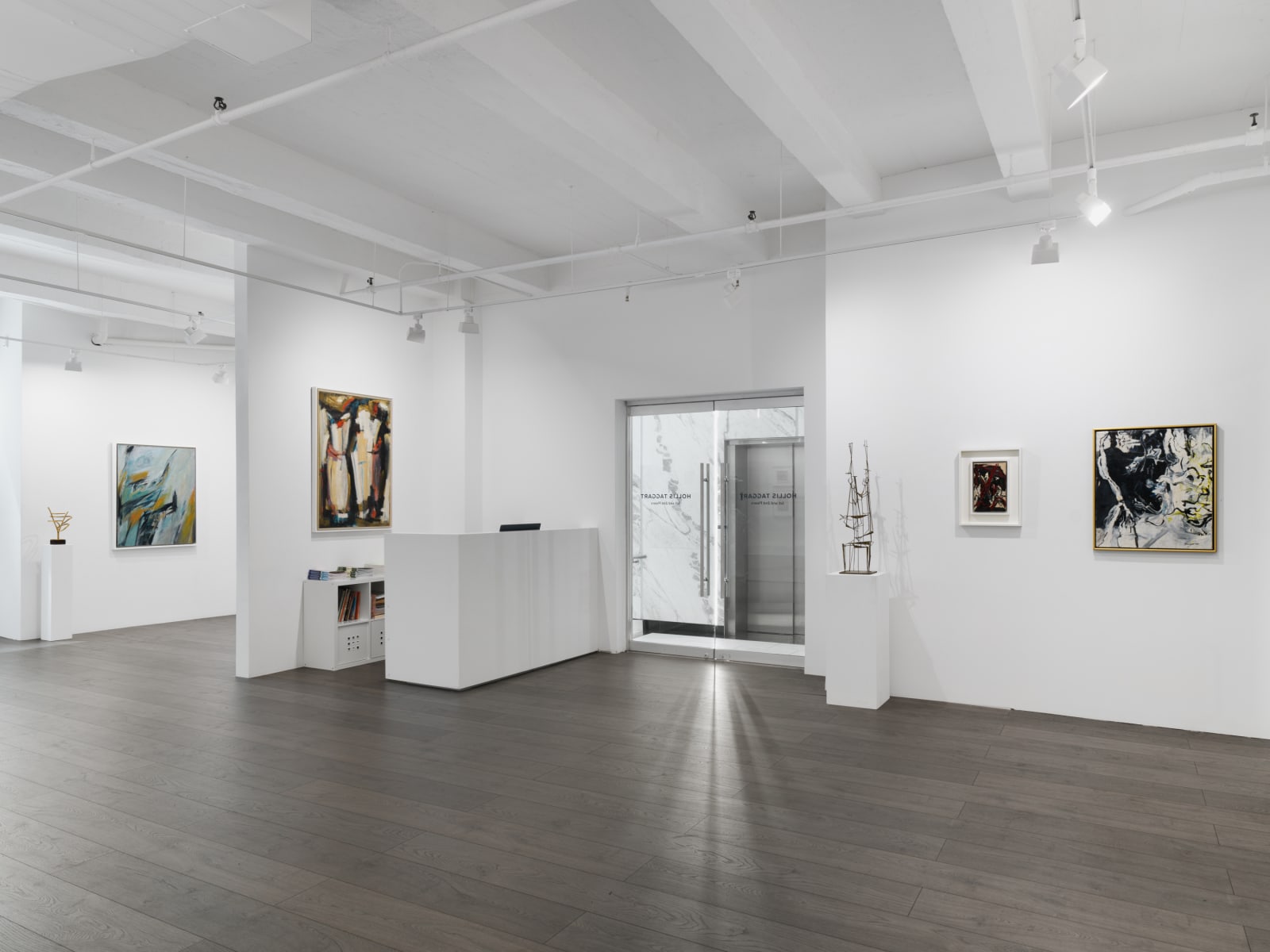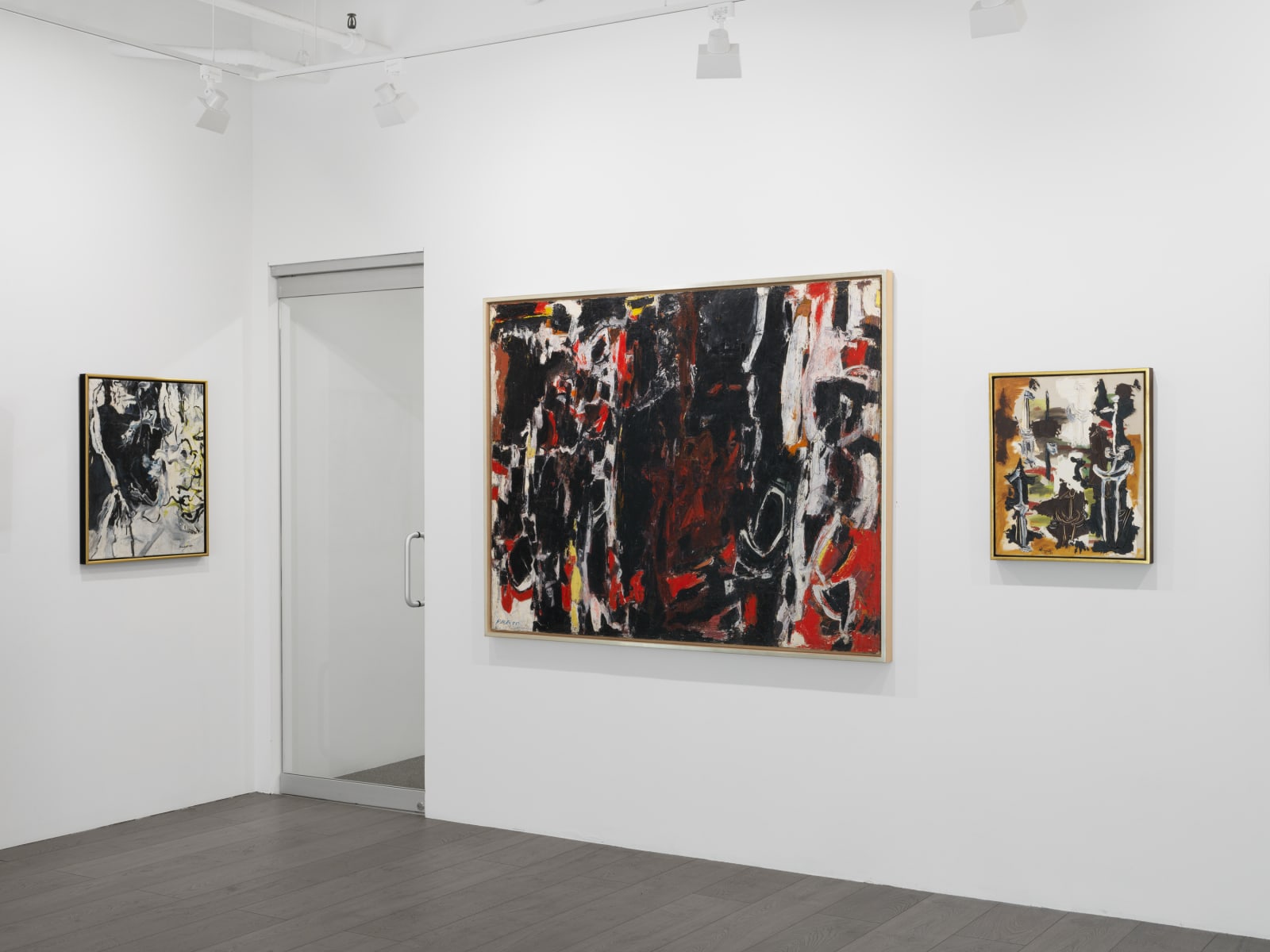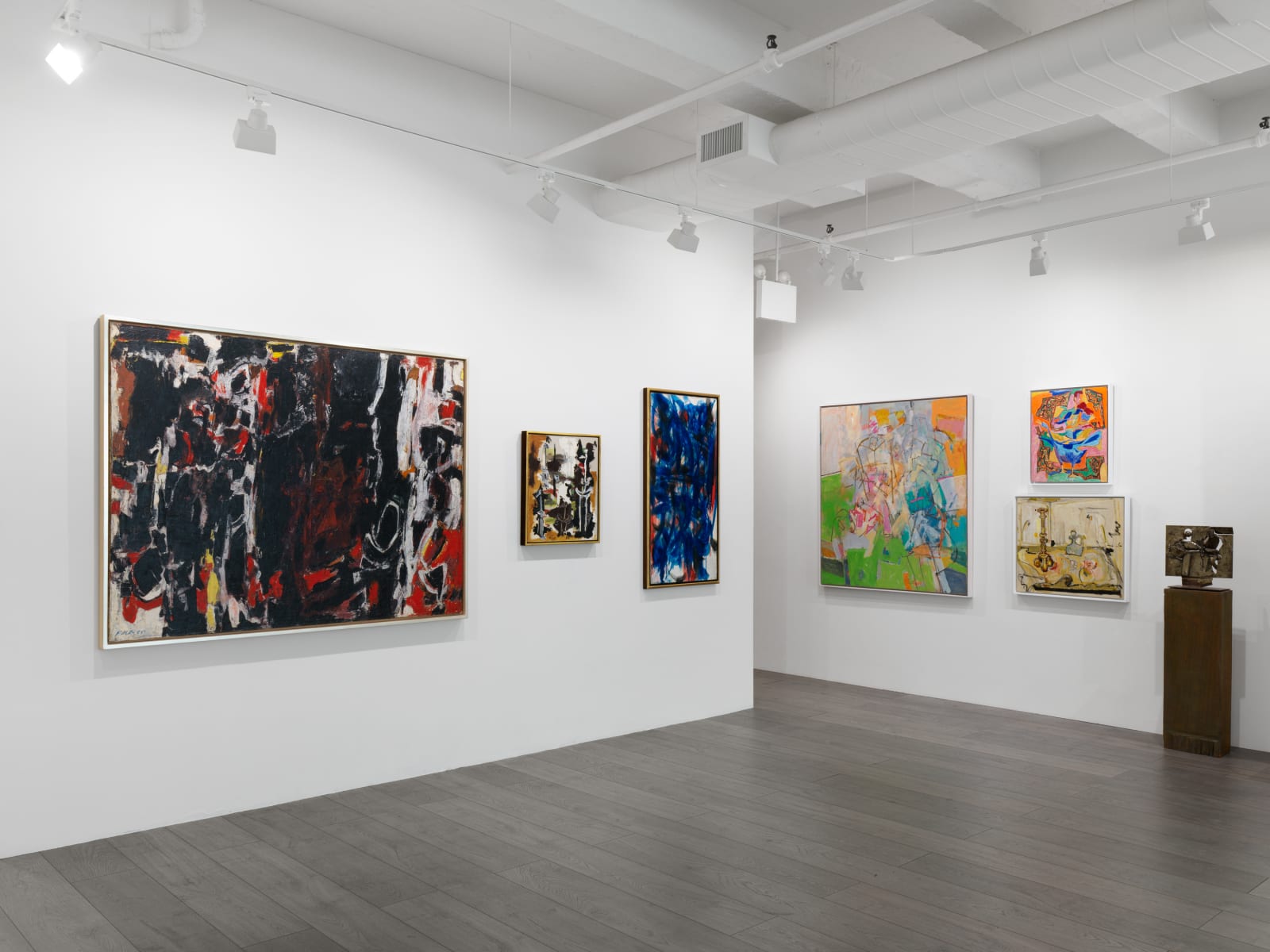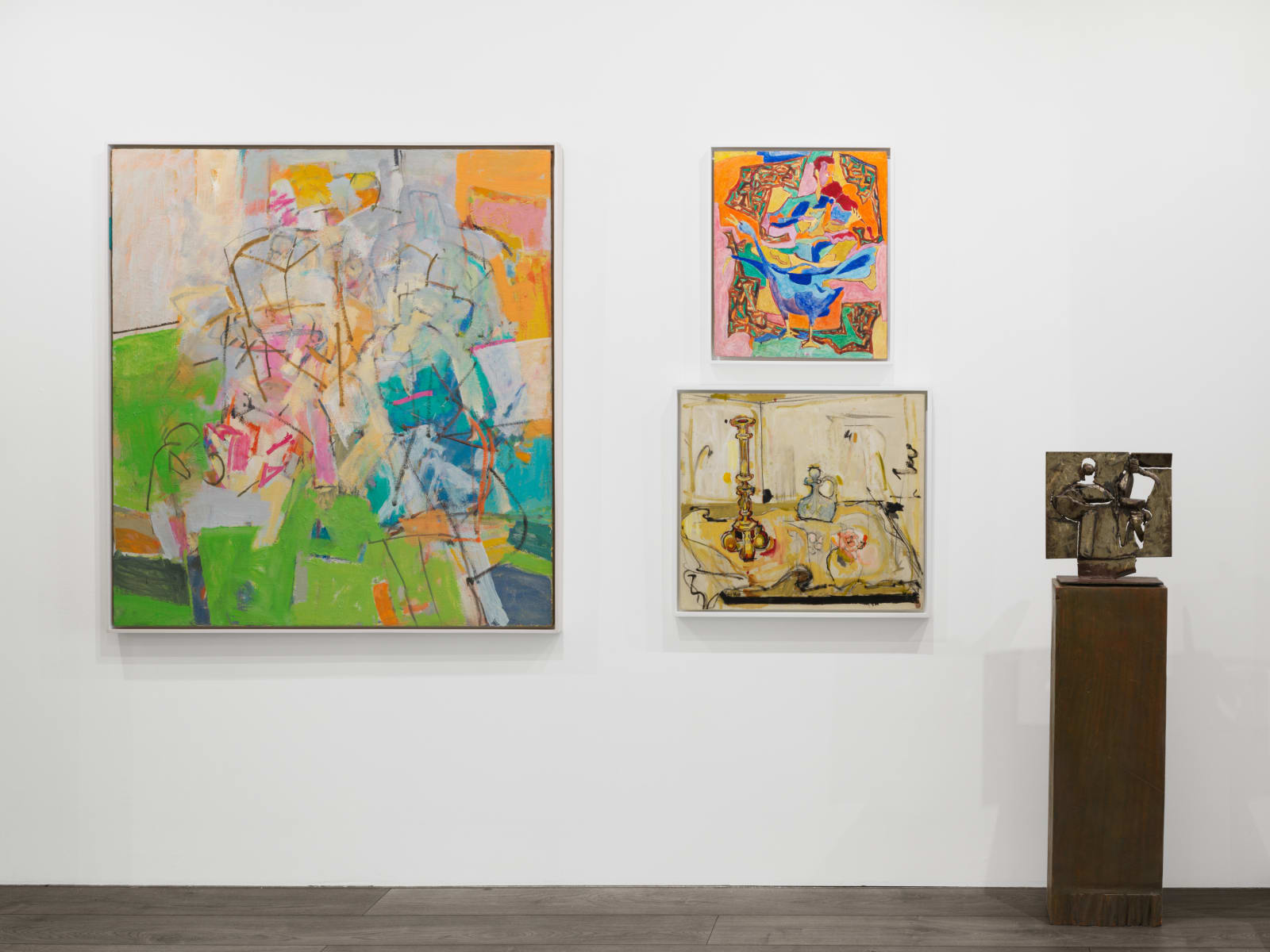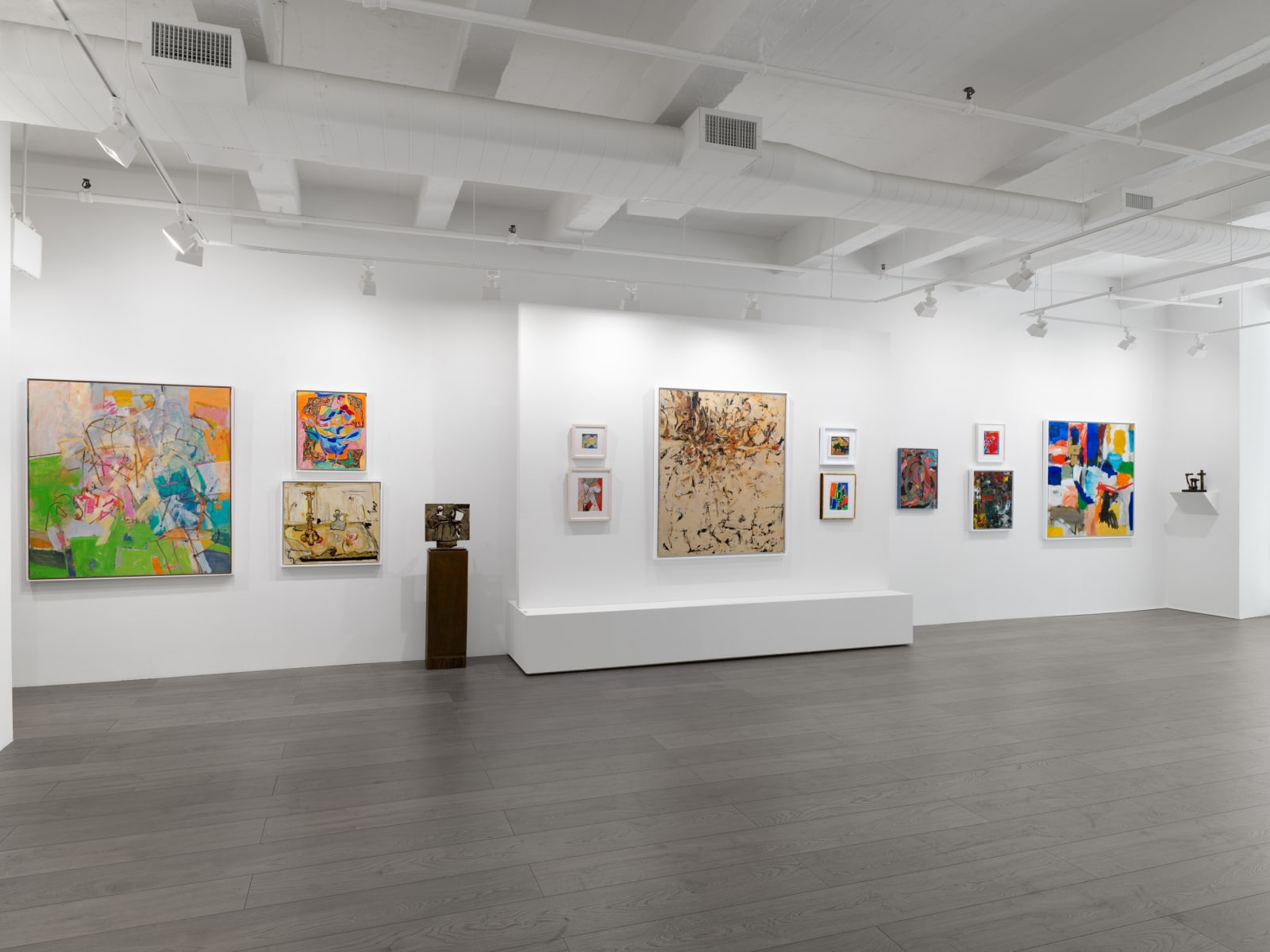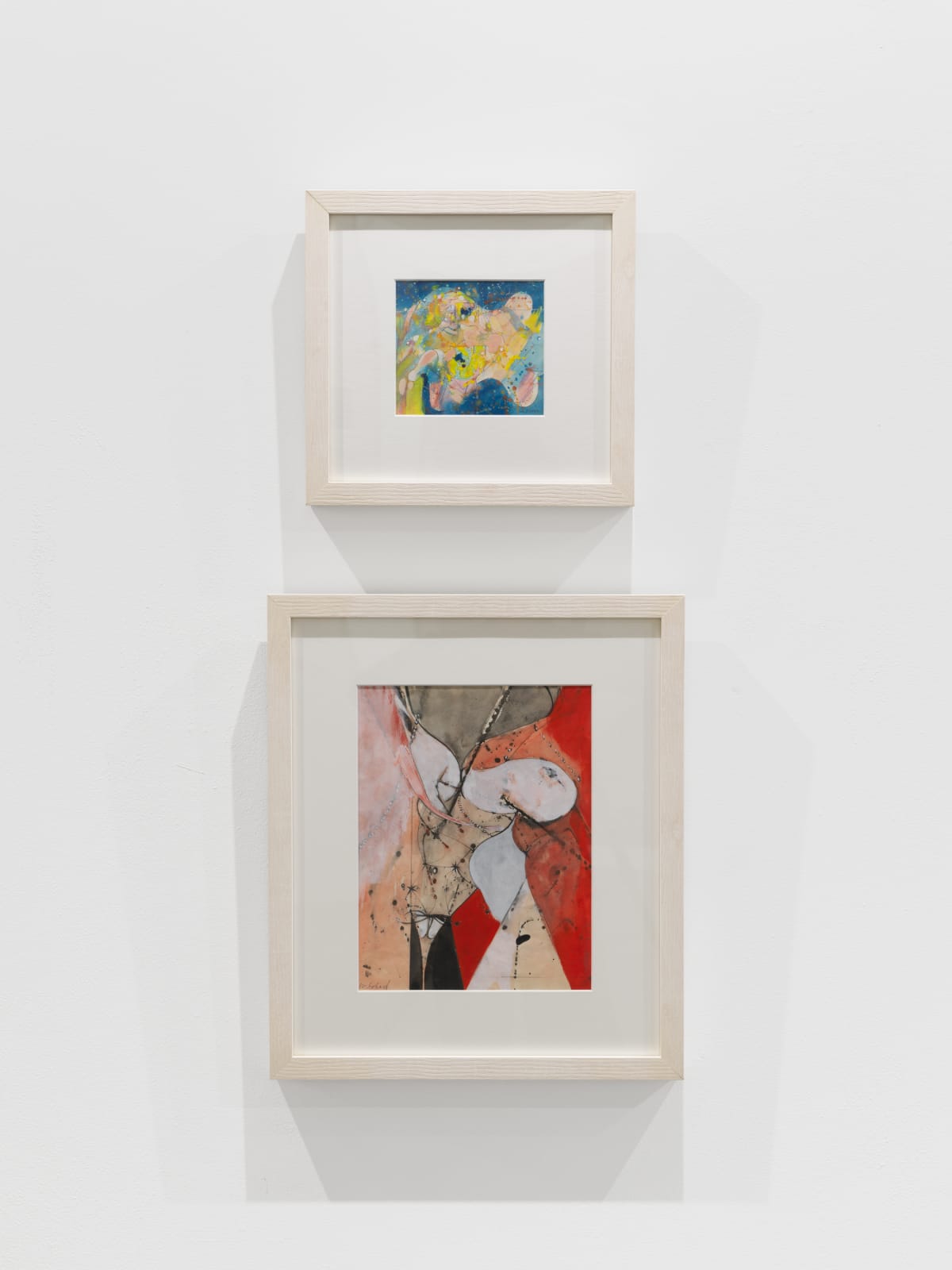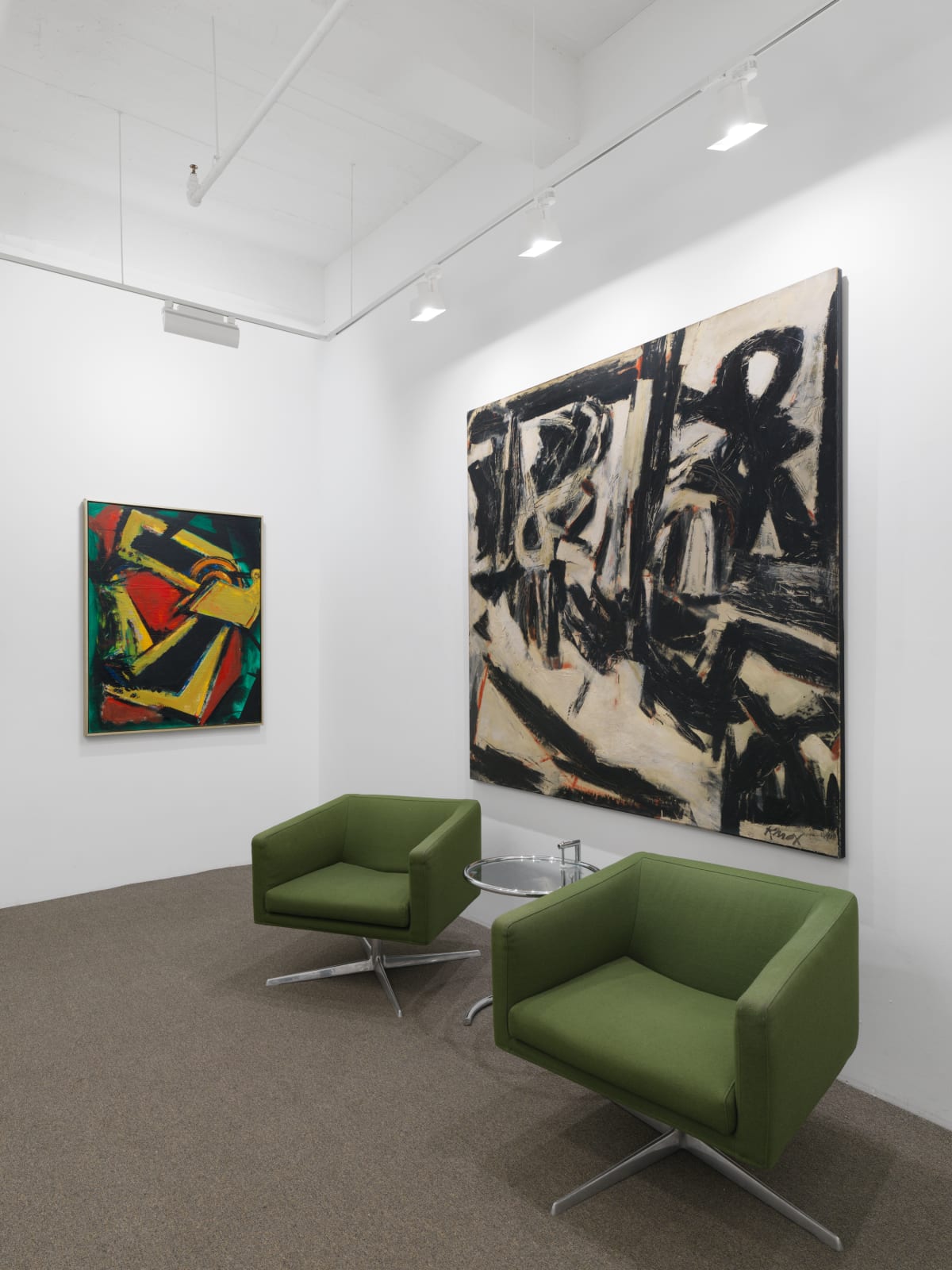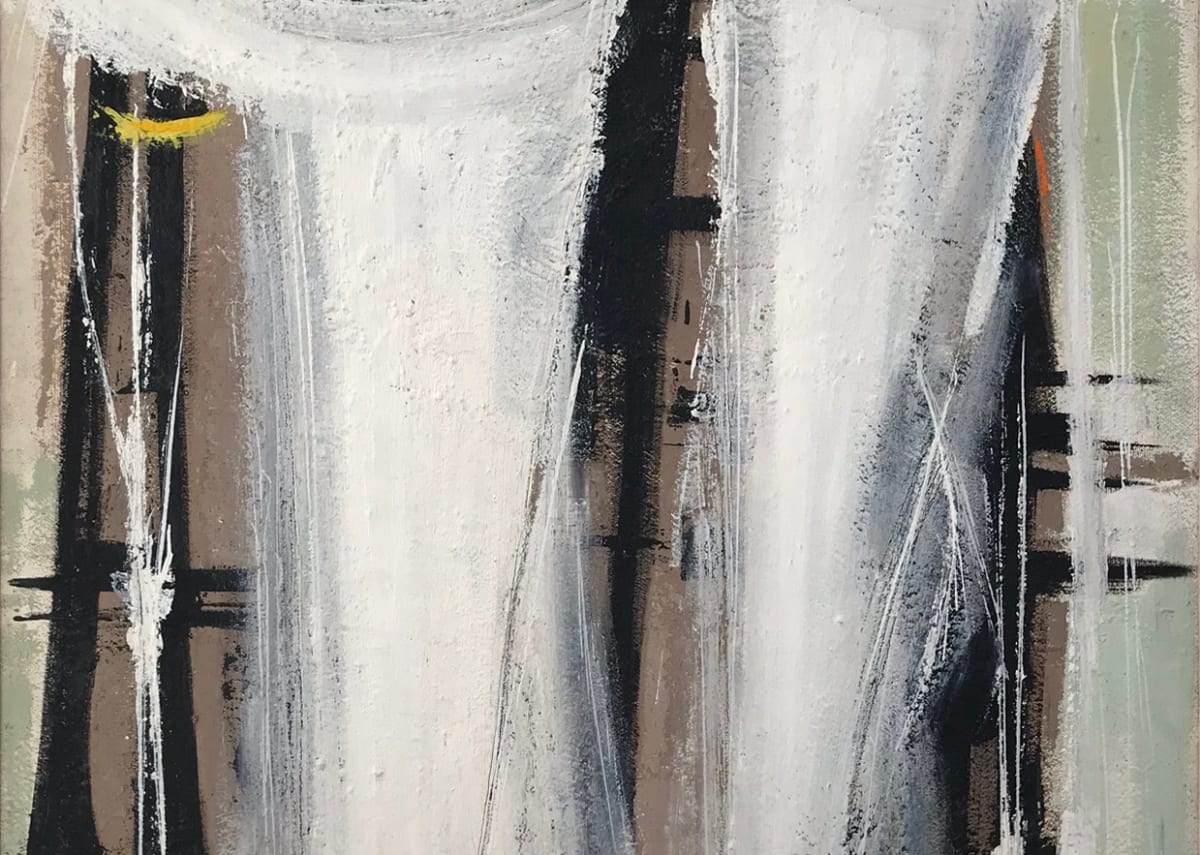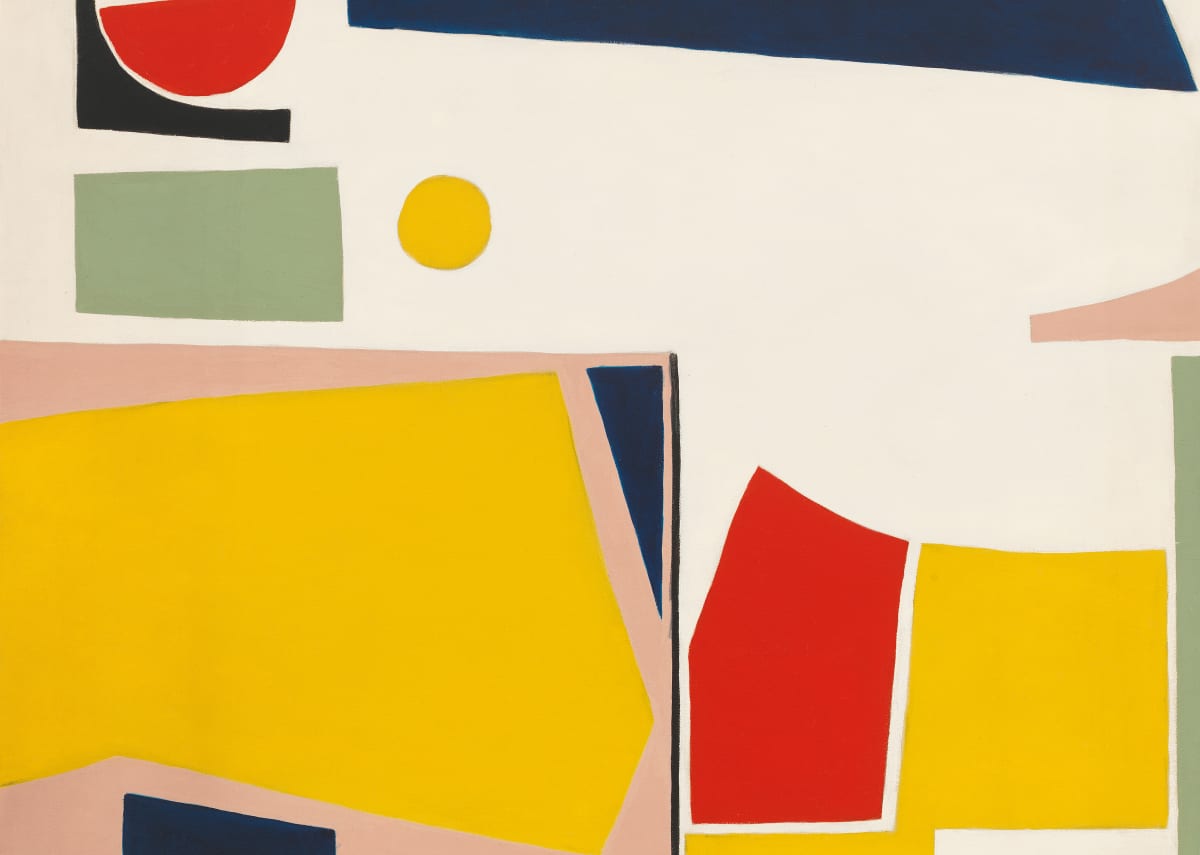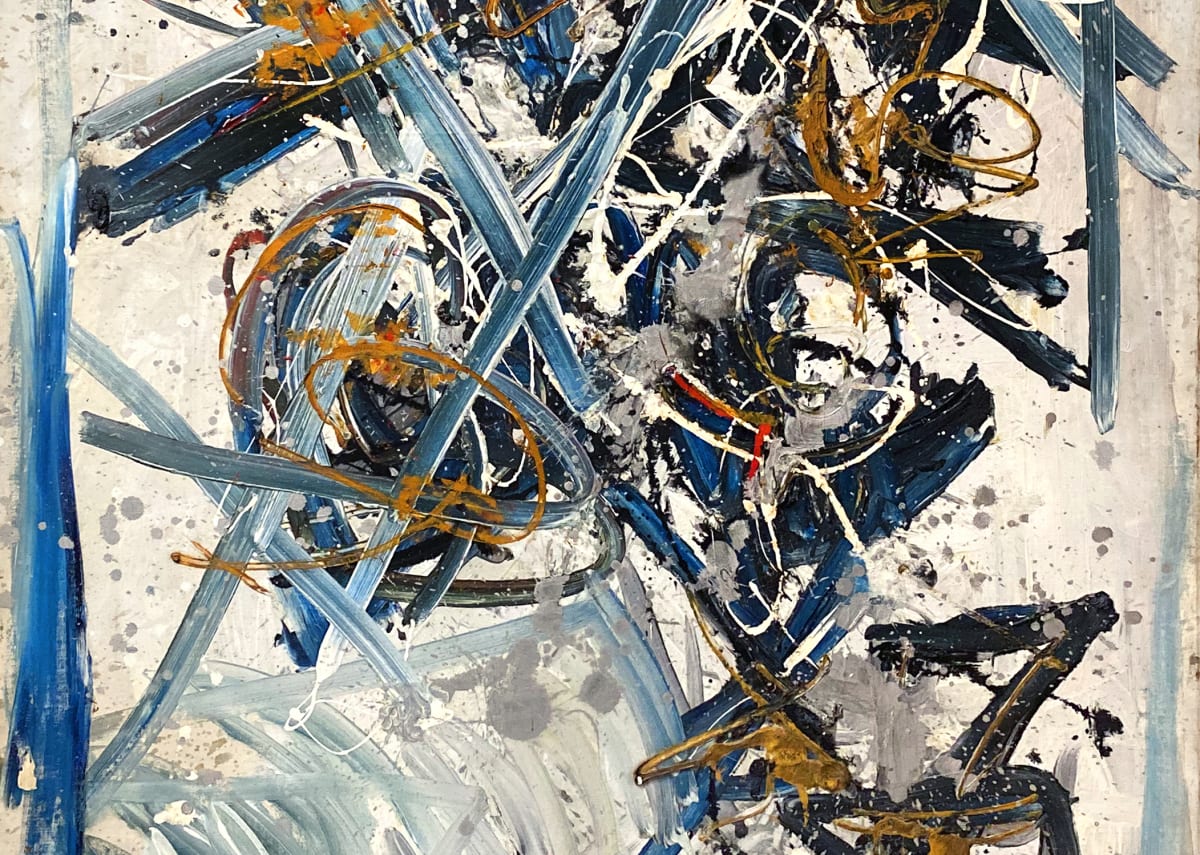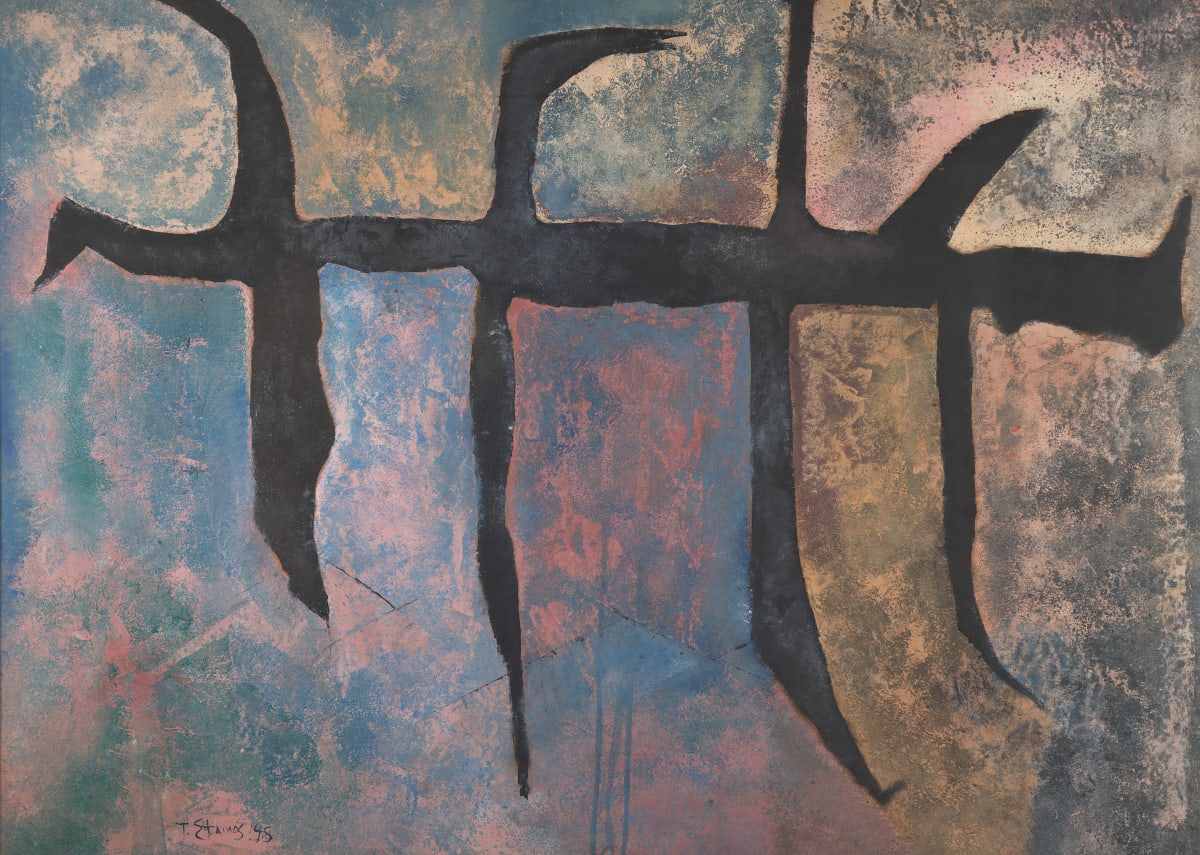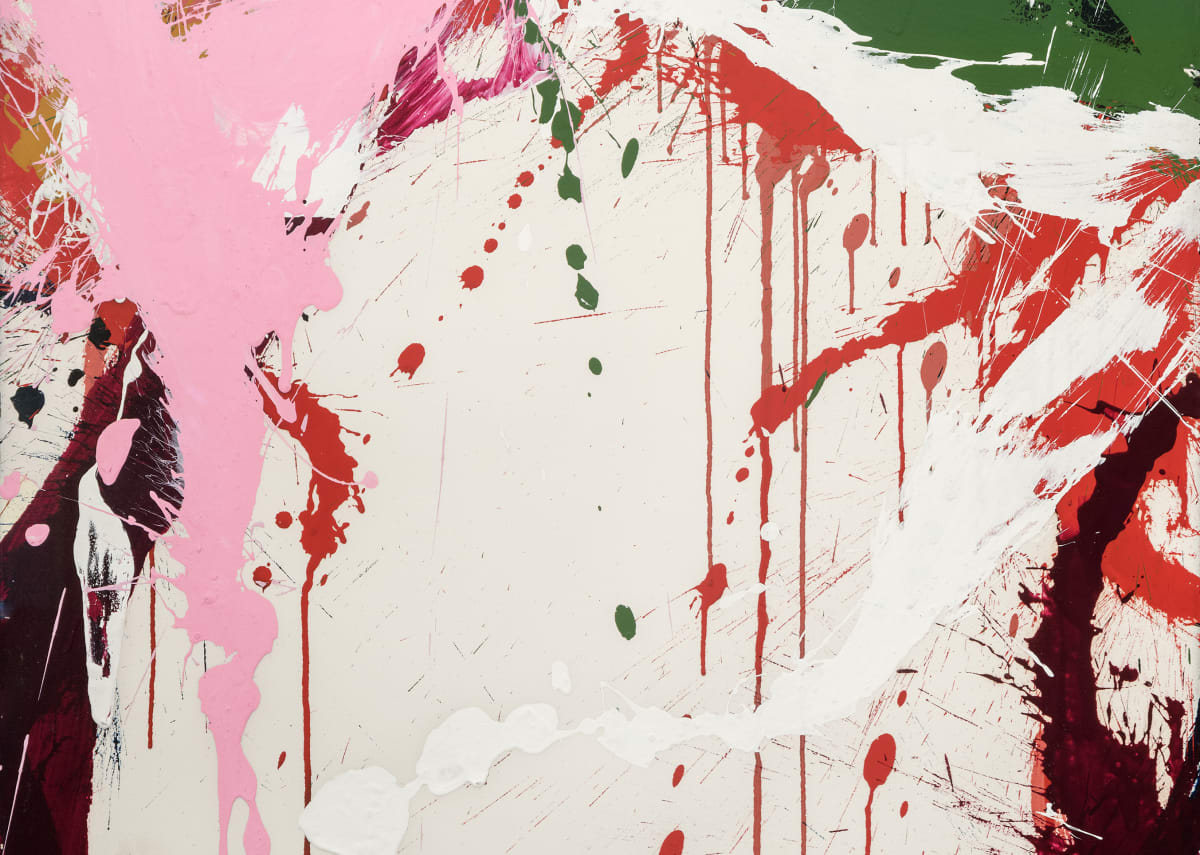
Influenced by post-war theories of existentialism as well as the automatist tenets of European Surrealism, these artists attempted to externalize their psyche to express shared, universal ideals.
Hollis Taggart is pleased to announce the opening of the exhibition From Provincial Status to International Prominence: American Art of the 1950s, featuring over 30 artists who experimented with new styles during the seismic formation of the New York School in the post-war decade of the 1950s. In the aftermath of World War II, as the epicenter of the international avant-garde shifted from Paris to the United States, a loose group of American artists came to be known variously as Abstract Expressionists, the action painters, or the New York School. They sought to reconceptualize painting entirely, and Abstract Expressionism became the first uniquely American movement to garner international stature. Influenced by post-war theories of existentialism as well as the automatist tenets of European Surrealism, these artists attempted to externalize their psyche to express shared, universal ideals. Presented at Hollis Taggart’s location at 521 W. 26th Street, the exhibition will be on view from April 20 through May 20, 2023, with an opening reception on Thursday, April 20, from 5-8PM.
“We are thrilled to present an exemplary collection of post-war works by both distinguished and overlooked artists that illustrate the diversity and development of the 1950s art world,” said Hollis Taggart. “Focused attention on one decadeallows for careful consideration of the impressive depth that the decade provided, and how multiple emerging styles were overlapping and informing one another. The exhibition continues the gallery’s longstanding, scholarly commitment to examining the ways in which historical movements organically shaped contemporary art today.”
The artistic community in New York during the 1950s, centered in Greenwich Village and known as “the Club,” maintained weekly programs of discussions that contributed to the experimental atmosphere. Though the social hierarchy of this decade was not fully open to women and ethnic minorities, artists such as Audrey Flack and Michael (Corinne) West, both featured in the exhibition, came to artistic maturity among this vibrant downtown scene and developed ties with influential artists. Concomitantly, there was an explosion of commercial and cooperative galleries in New York. Betty Parsons’s gallery, for example, was a major force in strengthening the Abstract Expressionist movement. Parsons, whose work Untitled is on display in this exhibition, showed the works of artists such as Rothko, Newman, Pollock, and Rauschenberg, long before they achieved acclaim. The extensive impact she made on a multitude of careers was owed to the commitment to her own practice.
The exhibit also includes members of the younger generation of the New York School, who adopted the stylistic vocabulary of the first-generation artists while sidestepping their existential concerns and concepts of heroic individuality. Many of the younger generation of artists had studied with Hans Hofmann, a German émigré who profoundly influenced the trajectory of Abstract Expressionism with his system of teaching that incorporated European modernism. Artists in this exhibition such as West, Richard Stankiewicz, Albert Kotin, and Larry Rivers all studied under Hofmann, with Rivers becoming particularly well-known for his distinct sensibility that merged Abstract Expressionist marks with Pop imagery. Indeed, the decade of the 1950s spawned a wide range of styles, including innovative painterly figuration by artists such as Grace Hartigan, Fairfield Porter, and Philip Pearlstein (see his work The Violinist in the exhibit). Other artists, such as Leon Berkowitz and Ben Isquith, both included in the exhibition, began experimenting with subtle tonal variations in fields of color (Irving Sandler, the New York School’s chronicler, named Isquith as the first Color Field painter). For other artists, the object-status of painting was abandoned altogether as the gesture moved into real time and space in “happenings,” informed by the chance operations of John Cage.
The breadth and depth of the works in this exhibit reflect the spirit of experimentation that marked the post-war period in American art as it progressed from its provincial status to international prominence. The decade of the 1950s under the Eisenhower era (1953–1960) was a significantly transitional period for American art—the effects of which still reverberate today, informing our current frameworks for understanding contemporary art.
For more information about From Provincial Status to International Prominence: American Art of the 1950s, please contact us at info@hollistaggart.com or +1 212.628.4000.
For press inquiries, please contact Aga Sablinska at aga.sablinska@gmail.com or +1 862.216.6485.
Artworks










